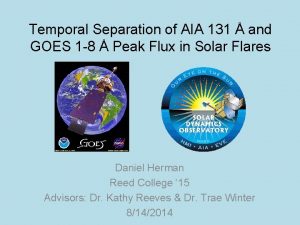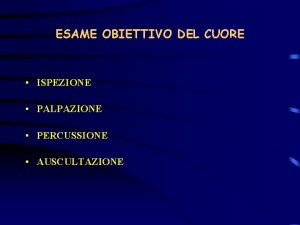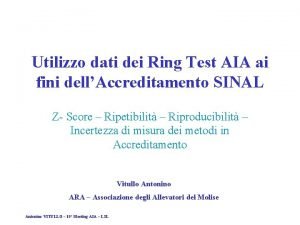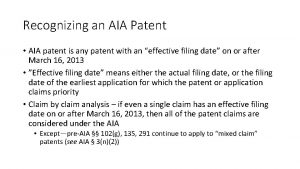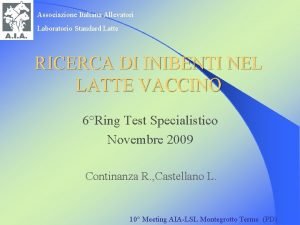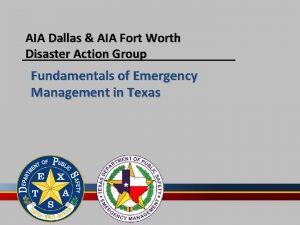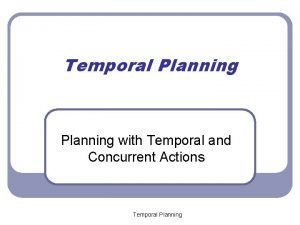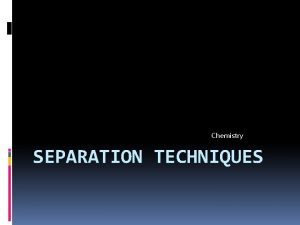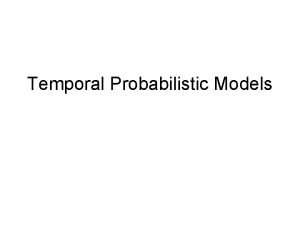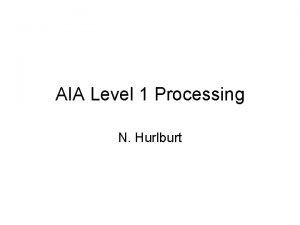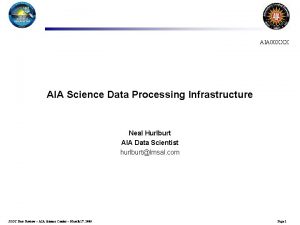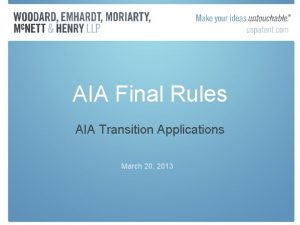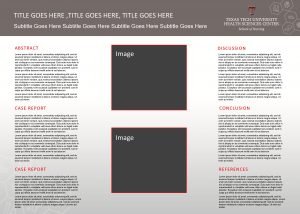Temporal Separation of AIA 131 and GOES 1

















- Slides: 17

Temporal Separation of AIA 131 Å and GOES 1 -8 Å Peak Flux in Solar Flares Daniel Herman Reed College ‘ 15 Advisors: Dr. Kathy Reeves & Dr. Trae Winter 8/14/2014

Why Study Solar Flares? • Flare radiation and escaping particles (CME’s) can damage satellites and energy grids. • Still many unknowns (including mechanism of energy transport) D. F. Ryan et al. APJ Supp. Ser. 202 (2012) A. O Benz, Living Rev. Solar Phys. 5 (2008) Image: SDO Gallery

Main Flare Phases • Impulsive Rise: EUV, SXR, HXR, Microwaves, Radio Wave Bursts, Hα • Gradual Decay: EUV, SXR, Radio, Hα A. O Benz, Living Rev. Solar Phys. 5 (2008) Joshi et al. APJ 743 (2011) E. R. Priest, Solar Phys. 86 (1983)

Project Motivation! • We would like to better understand the energetic evolution of solar flares in general. • SXR/EUV Flux Timing is not pinned down! M. B. Dhanya and A. Bhardwaj, Astro Phys. and Space Sci Proc. (2010)

GOES-XRS and SDO-AIA Comparison XRS AIA Temporal Cadence 3 Seconds 12 Seconds Relevant Passband 1 -8 Å (SXR) 131 Å (EUV) Relevant ~30 MK Temperature ~10 MK Primary Use Thermal Evolution Analysis Flare Classification X M C B A J. W. Brosius and G. D. Holman, A&A 540 (2012) J. R. Lemen et al. Solar Phys 275 (2012) Universal Time Image: Solar. Monitor. org

Initial Expectations • The standard flare model leads us to expect to first see a peak in the hot SXR flux. • As time goes on, we would expect cooling of the plasma, resulting in a later peak in the EUV. R. A. Hock et al. ar. Xiv Preprint (2012)

My Work • Events selected by Flare Detective Module • My Python program first creates lightcurves for AIA and GOES data • Data Smoothing • Peak Time Comparison • Use difference in AIA/GOES peak time to populate histograms

Main Results GOES First AIA First • 400 total events mostly from first 7 months of 2014 and some from 2012 • 142 B class, 250 C class, 8 M class • 224 Positive Events • 176 Negative Events • Slight statistical skew towards AIA peaking first!

Histograms by GOES Class Skew = -. 60 Kurtosis = 7. 13 Sigma = 72. 5 Mean = 8. 33 B class Skew = 1. 04 Kurtosis = 4. 89 Sigma = 113. 2 Mean = 18. 7 C class Without outlier: skew =. 45 ; kurtosis = 4. 2 sigma = 65. 2 ; mean = 11. 0 skew =. 68 ; kurtosis = 3. 6 sigma = 107. 4 ; mean = 16. 4

Classic Flare Profile: Sanity Check Separation: 46 seconds S

Possible Solution Impulsive: 40 second heating window Gradual: 200 second heating window 131 Å peaks 5 seconds before GOES

AIA 131 Å Temperature Response

Possible Early Hot 131 Å Emission Separation: 247 seconds S

Hot or Cold 131 Å?

Review • Both B and C flares tend to have 131 Å peak first (possibly a result of gradual energy deposition) • C flares have a broader distribution than B flares. • C flares have a greater variety of possible magnetic configurations, allowing for more variability in the rate of energy deposition.

Extensions • Run my program on more AIA channels for each event. • More channels could help us narrow down whether we are seeing hot or cold emission in the 131 Å. • Use GOES catalogue to narrow down spatial uncertainties. • Use XRT data when available.

Acknowledgements • Advisors: Kathy Reeves and Trae Winter • Admins: Jon Sattelberger and Alisdair Davey • AIA Satellite: Contract SP 02 H 1701 R from Lockheed Martin to SAO • NSF 2014 REU in Solar Physics at SAO, grant number AGS 1263241
 Aia 131
Aia 131 Temporal separation
Temporal separation Aia baseball rules
Aia baseball rules Liiliakukk
Liiliakukk Aia ilas
Aia ilas Aia integrated project delivery
Aia integrated project delivery Ispezione palpazione percussione auscultazione
Ispezione palpazione percussione auscultazione Aia 360 test menu
Aia 360 test menu Settore tecnico aia
Settore tecnico aia Aia201
Aia201 Aia lsl
Aia lsl Nilai unit equity fund aia
Nilai unit equity fund aia Patent effective filing date
Patent effective filing date Acia asean
Acia asean Laboratorio standard latte
Laboratorio standard latte Aia
Aia Aia fort worth
Aia fort worth Phy 131 past papers
Phy 131 past papers
